“I have no regrets with Iron Maiden. I’m still friends with Steve Harris and Bruce Dickinson” – Interview with Thunderstick
Thunderstick is the stage name of Barry Graham Purkis, an English drummer who is best known for his work with the New Wave Of British Heavy Metal band Samson. He is known for his theatrical performances, often wearing a mask and performing in a cage. Thunderstick has also released several solo albums under his own name and performed with other bands throughout his career, including Iron Maiden, with whom he played from 1977 to 1978. Thunderstick’s latest release is the album “Lockdown,” which was released last September. I met a good-humored Barry in London in early March, and here’s a summary of our interesting discussion
WORKING ON THE LOCKDOWN ALBUM
First of all, Barry, congratulations on the “Lockdown Album.”
Thunderstick: Thank you very much, Marko.
You started working on the record in 2019, but for certain reasons, it took a very long time to complete all the work and finally release it. At least you now had enough time to make everything properly, right?
Thunderstick: I did. Well, the latest album was originally going to be called “Beware the Dark Cabaret Hooligans” because I have a kind of thing for five-word titles of my albums like “Something Wicked This Way Comes,” “Feel Like Rock & Roll,” “Echoes From The Analogue Asylum,” all five-word titles. But what happened was that in 2019, I started putting down drum tracks for it, and the next thing that happened was COVID. And, like the whole world, we went into lockdown, and we weren’t able to do anything together as a band. I wasn’t able to be with my musicians. The guitarists that I was working with at the time both decided that they wanted to go in a different direction and left because they thought that it was going to take too long to generate and all that kind of– I couldn’t understand why because everybody was in the same situation. But that’s their decision. So what I did was I wrote to a lot of people, a lot of friends, and I said to them, “Do you know any guitarists that are on the lookout for a band and would fit the remit for Thunderstick, being a theatrical band?” And a lot of them came back and said, “We don’t really know anybody that’s looking for a gig at the moment, but can we offer our services?” And these are all friends of mine. And the more I thought about it, the more I thought, “You know what, that would be a great idea.” So, I have a lot of friends on that album. It was all done remotely because they were using their own gear.
I can guess that you’re an “old-school” musician who’s used to working in a traditional way when it comes to making music. First, you’d write the songs and lyrics, then the band would rehearse them together and finally record them in the studio for the album. But because of the lockout, I can guess that this album was made differently, or should I say, in a “modern way.” Most likely, after the songs were written, each musician learned their parts at home, recorded them, and then sent the files to the producer, who then put the album together from the files. Am I right with my lucky guess?
Thunderstick: We were just sending files, yeah. Which is not a way that I’ve ever worked before. And I was also learning Logic, the software package. And everybody’s files were different. They all sounded different. They weren’t a cohesive type of sound. And I had to somehow kind of actually combine all those different sounds and make them sound like a Thunderstick album, which was a long time in doing. But as you know, we were locked down for quite a while. So it gave me the time to be able to work on it and do it. I ended up working with a friend of mine who lives in Norway, a guy called Marius Danielsen, a great guitarist. And we remotely, backward and forwards, started putting everything together, and I was kind of producing it long distance, as it were. And the finished product is very different from “Something Wicked.” “Something Wicked,” I did in no time at all. That was all in one studio, and I mixed it in two days. So this was a different process, but I’m really pleased with the product. I’m pleased with the way it sounds.
Did you find something positive in the fact that you had to learn new technologies and ways of working while making the album?
Thunderstick: Yeah, very much so. I mean, I’ve never done anything like that before. And so learning the software. Also, when the guitarists submitted their files to me, most of them had not submitted them dry. They had put their effects on them, and so it was something at the time I didn’t really think about, but then when we came to mix, it was like, “Oh shit, how am I going to actually combat this?” So, it was hard work, but I thoroughly enjoyed the process. Yes, I learned a lot from it.
And maybe the next one will be much easier for you and everyone in the band?
Thunderstick: It will be. Yeah, it will be so much easier. I now have a regular live band. And so I’ve already started writing for the new album with the guitarist. And yeah, we’re looking forward to that.
Wow, that’s great to hear.
Thunderstick: Yeah, it’s good. Yeah.
Now that several years have passed since the lockdown, how would you briefly summarize that time? What has stayed in your mind the most from that period?
Thunderstick: Yeah, it was a crazy time. It really was crazy when the whole world went into lockdown, and we weren’t allowed to go out. And musicians were finding new ways of being able to try to make a living.
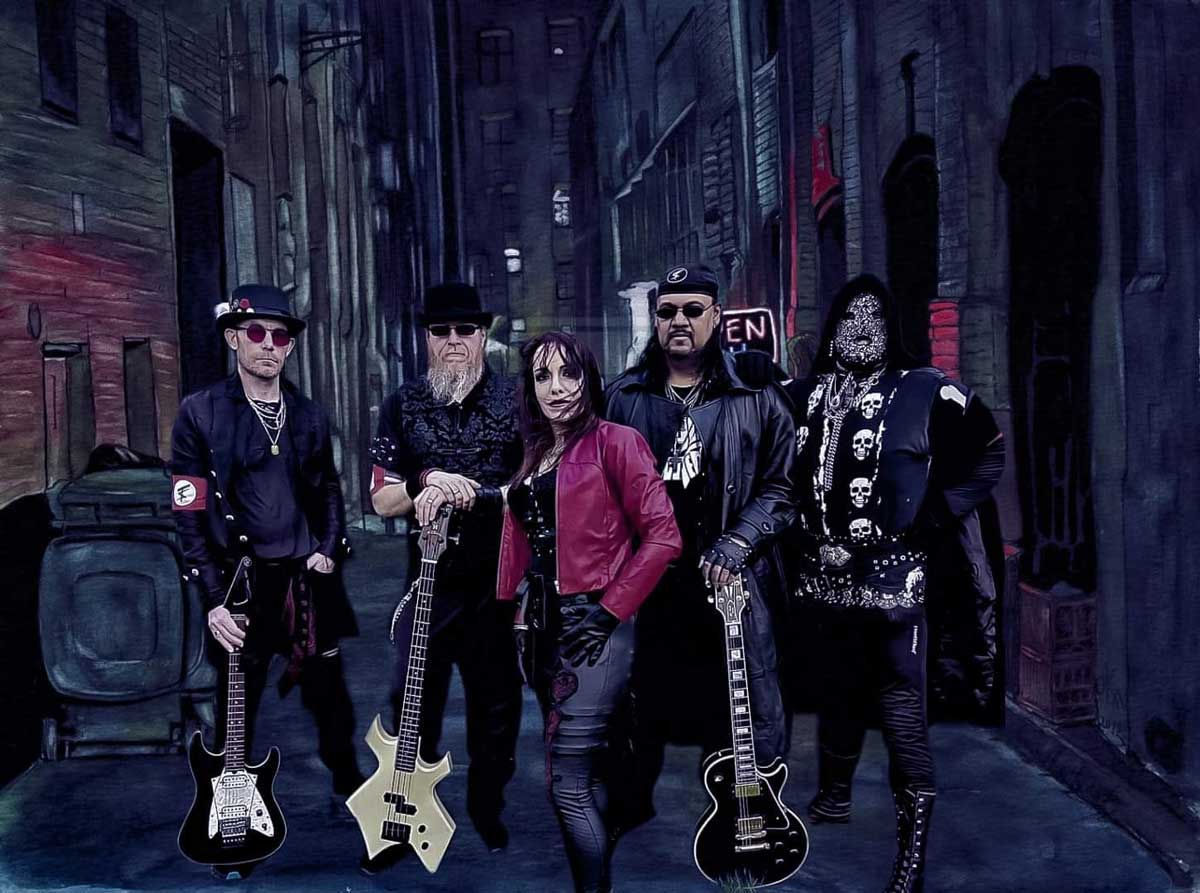
MORE LOCKDOWN ALBUM TALK
Let’s next disregard that heavy period of time behind creating the ‘Lockdown’ and think of it solely as your new album; how satisfied are you with the final outcome this time compared to past Thunderstick releases?
Thunderstick: Writing-wise and material-wise, I think it’s probably the best thing that I’ve ever done. There is material that I wrote specifically for that album, and I also used material that I had written a long time ago, back in the ’80s and had never seen the light of day. We gigged it. Back then, we’d actually done it live, but I’d never done anything on an album with it or recorded it properly. I recorded a few demos, but that was as far as it got. So, I was able to combine both the modern stuff and the stuff that I’d already done. And I kind of combined those and brought them up to date. So yeah, I think it’s probably one of the best things I’ve done.
After a couple of listens, I would say that ‘Lockdown Album’ is a tight package, and everything fits well together.
Thunderstick: Thank you. I mean, the only criticism that I’ve had from people who have reviewed it was that it’s possibly too long an album and that I should have cut back on certain tracks and made them shorter. But you can’t please everybody all the time.
You know how the story went; once the CDs first came out, because of the format, everybody tried to put on as much material as possible. There were suddenly plenty of 90-minute-long albums. On many of those, there were songs that weren’t necessary, to be honest.
Thunderstick: Yeah, yeah. But also the length of the songs. For example, there’s a track called “Warhead” on it that I did in three separate mixes. There’s the first section, the second, and the third. Sonically, they’re all different, so they have to be looked at in a different way. And so yeah.
Thunderstick music has often been described as a New Wave Of British Heavy Metal. What is your opinion on the matter? Do you think that’s the right term to use when discussing your band?
Thunderstick: Yeah, yeah, undoubtedly. Yeah. I mean, I listen to a lot of modern heavy metal/rock, and there are a lot of people still using that detuned bass so that you get that real crunchy bottom end and kick drums bringing in all that kind of stuff. And I don’t play that way. I play in my own style. I don’t do double-kick drums really fast. And so my material– plus the fact that I’m writing for a female voice all the time as well. And so it is, yeah, very much a New Wave Of British Metal-sounding album. And it’s not something that I make a conscious decision to do. It was just the way it is. That’s the way that I write.
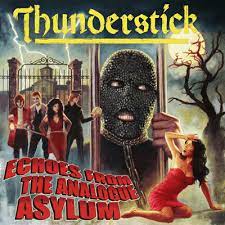
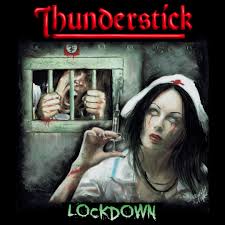
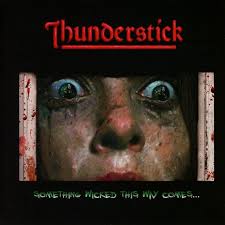
THUNDERSTICK AND FEMALE VOCALISTS
There’s one thing I have always wondered about on Thunderstick. Is there a certain reason why the band has always had a female singer in the band?
Thunderstick: Well, it’s strange because, when I was with Samson, in this country at the time, the women’s activist groups were really quite strong. Women’s liberation was a very strong movement over here. And because my image with the Thunderstick mask was very striking, and it was very stark. And unfortunately for me, at the time, it was quite well known that there was a guy that was raping women, breaking into their homes, and he was wearing that kind of mask. And even the music papers of the time, like Sounds, didn’t really do me any favors because they used to have, at Christmas, they’d have a rundown of different awards for different musicians. And my award was the Best Dressed Cambridge Rapist Award goes to Thunderstick. And I was like, “Oh, my God. Really?” And I’ve never regarded Thunderstick to be a sinister character in any way, shape or form. I mean, Slipknot are far more sinister-looking than I am. My image was always a kind of knockabout image, you know?
And so, the women’s groups used to tear down Samson posters. They also wanted to try to have a conversation. And I said, “Well, let’s do it on radio. Let’s go to a radio station somewhere. You can put your argument; I’ll put mine.” But it was never taken up. It never materialized. So when I put my own band together, I thought, “You know what I’m going to do–” because at the time, there were not a great deal of male-orientated bands that had a female vocalist. There were a few, but not a lot. There were all-girl bands like Girlschool and Rock Goddess, and people liked that, but there weren’t a great deal of rock bands that had a female vocalist. And that was my decision. I made a conscious decision that I would take on a female vocalist so that if I got any grief from any activist groups, I could just go, “Go and talk to her.” And that was it. And it stayed with me. I love writing for female vocals. The vocalist, the singer I’ve got at the moment, I think is the best one that I’ve ever had in the band. She’s got such a range, and she’s got great stagecraft as well. She can really take an audience. And I love watching it from behind my kit. I sit there and watch it. It’s great. Watching her work in the audience is really good.
Yes, and if I recall correctly, the current singer’s name is Raven?
Thunderstick: Raven. Yeah, Raven Blackwing.
Isn’t she the fifth vocalist for Thunderstick?
Thunderstick: Yeah, probably. Well, the first one was a young lady called Vinnie Monroe. A couple of years back, we had our 40th anniversary, and I played at the Cart and Horses. And Vinnie, my first singer, came and got up and did a couple of songs with us. And the first gig would have been in 1982, August the 5th, at the Marquee, London. And yeah, it was great to see her again and brought back a lot of memories. And then after that, I had Anna, who was– Vinnie was Scottish. Anna was Maltese. And with Anna, she did the EP with me, “Feel Like Rock ‘N’ Roll.” She did the four tracks on that. And we started rehearsing for a live tour, and she lost her voice, and it was becoming a big problem, and so I had to say– we had to cancel the tour, and I said goodbye to her, and then Jodee came in. And Jodee, for my sins, I ended up having a relationship with her, and we moved to the States after that album. We tried to get things going over here, but that major record deal was always elusive. I was always on the independent labels. You know what it was like.
In 1986, you and Jodee moved to the US after the shelving of the “Don’t Touch, I’ll Scream” album. From what I understand, you had ambitious plans for Thunderstick’s future in the US at that time, correct?
Thunderstick: I did, yeah. And we tried to go over there and put a band together. We recorded over there. We didn’t do any live work. I was looking for management more than anything else. At the time, we were looking at Pat Benatar’s management, and we got so close, but it never happened, so that was it. We came back here, and the same thing was still happening. I think the image was too much for some record labels; it was a deterrent, and they didn’t want to invest in it. And I mean, things are very different now. The music industry is sometimes something that I don’t recognize anymore.
How close were you actually to getting the major deal at that time?
Thunderstick: It was close just so many times. I could write a book about the number of times that I got so close. But hey, ho, everybody’s got a story.
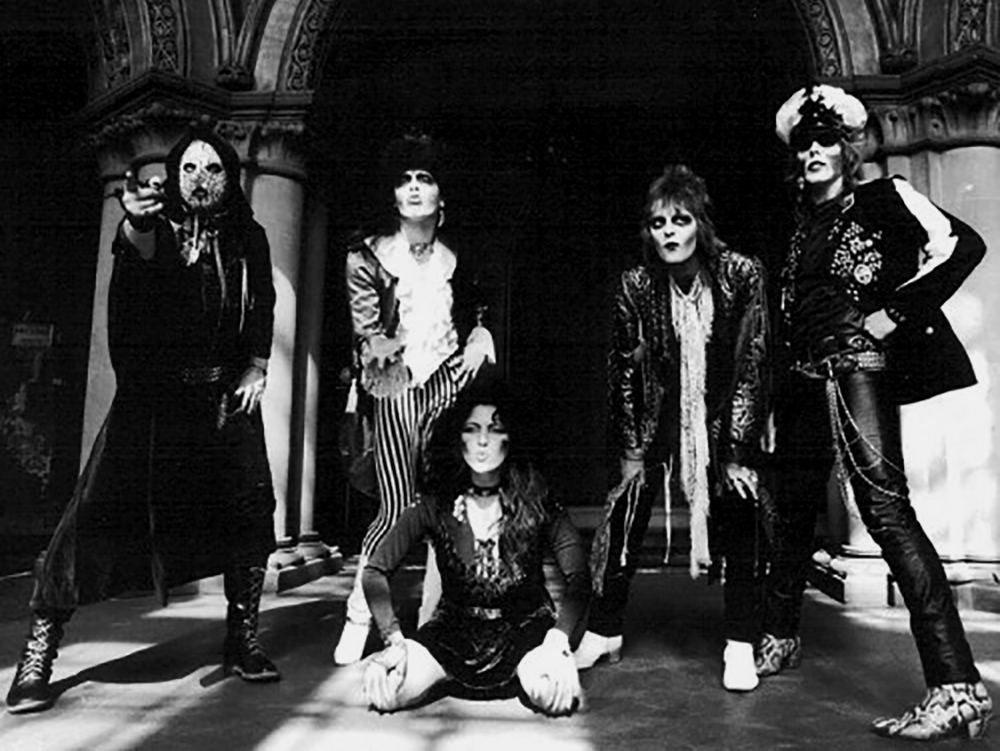
IRON MAIDEN AND SAMSON TALK
In addition to your successful career with Thunderstick and Samson, you are also known as one of Iron Maiden’s early drummers. After you had played several shows with Iron Maiden in 1977-1978, you left the band and joined Samson in January of 1979. Later in the year, Samson’s original drummer, Clive Burr, joined Iron Maiden. Have you ever regretted not staying in the band?
Thunderstick: I have no regrets with Iron Maiden whatsoever. I’m still friends with Steve Harris and Bruce. And I hope that somewhere along the line, I could– I haven’t seen Bruce for many years because we work in different circles these days. He’s a multimillionaire, and I’m not! “Laughs” So I have no regrets with Iron Maiden. What I do regret is that there are a lot of people who view my music, and they are somewhat disappointed because it’s not out-and-out heavy metal. It’s more what I would consider as a power rock. It’s a hard rock, as you’ve said, New Wave Of British Heavy Metal, that kind of sound. It’s not heavy metal. The Thunderstick image became the focal point for the New Wave Of British Heavy Metal with the front cover of Sounds, and the mask was used. And they bought out a new Thinderstick re-visited album CD. The original cover had the Thunderstick from Sounds. But there’s a retail shop over here called WH Smith, and they wanted to stock the albums in all the stores, all the WH Smiths. They refused to take it unless the image was covered up, so they put four other photos over the top of the Thunderstick image. I mean, with the music, a lot of people think I am– looking at it, “Oh, a guy that wears a mask, he used to be an Iron Maiden, he used to be in Samson, so it’s got to be heavy metal,” and they get a bit of a shock when they hear what I do because it’s not heavy metal. It’s hard rock, and it’s powerful rock. It still has that ability to punch people in the face, but it’s not heavy metal.
When you first joined Samson, what kind of a band was it then?
Thunderstick: Well, at the time, Samson were a three-piece, and we toured as a three-piece. The first album released, “Survivors,” was with John McCoy from Gillan on bass. I’m still friends with John to this day. He’s such a wonderful musician and a really, really nice guy as well. And we toured as the three-piece, and we were looking for that major deal. The management company was trying to push us wherever they could. We put together the Heavy Metal Crusade, and that came about because Paul Samson was good friends with Kevin Heybourne, whose band was Angel Witch. So they took on Angel Witch, and we were looking for another band to make it a package. And they said, “Who else can we look at?” And I said, “Well, I used to play for a band called Iron Maiden. Maybe we should bring them on the tour.” So the three of us went out and toured it. And I mean, it was really good, but we were really, again, that close with CBS. CBS came and saw us at a gig, and they said, “Yeah, we like the band, but we think that you need a focal point at the front of the stage, and it doesn’t work as a three-piece. You want to try to free the guitarist up so that he’s able to concentrate on playing guitar, and you need a vocalist.” At the time, there was a band called the Heavy Metal Kids.
Yeah, I remember them.
Thunderstick: Oh man, I worshipped the Heavy Metal Kids. I loved them. And we’re talking about pre-punk, and they were great. They were really good. And their singer, a guy called Gary Holton, I loved him. I loved to watch him; he was mesmerizing, a great showman. And I wanted to go forward with him. And we started kind of getting in touch with people that he knew, etc. But he was just returning to acting because he’d been an actor. And he was going into a television series called “Auf Wiedersehen Pet.”
Actually, I do. That was a British comedy-drama television program about seven British construction workers who left the country to search for employment overseas. And at some point, they lived in Düsseldorf, right?
Thunderstick: Right. So you know that. So that was that. And then one day Paul and I went out for a drink, and we went to the pub, and there was this pub band playing, and they were set up in front of the toilets, and the singer, Bruce Bruce, was quite crazy. He was picking various people in the audience and giving them a hard time. And I looked quite crazy at the time. I had bright red hair, and my hair was all like Paul Stanley. It was all kind of bouffant. I kind of looked like Ronald McDonald [laughter]. And he started having a go at me. And I thought, “There’s something about this guy.” And he was using the toilets as a changing room. So Paul and I went out to the toilet, and Bruce thought we’d go in there and beat him up or something because “How dare you start saying–” that kind of thing. We spoke to him, and we said, “Can we have a word after the gig?” So we told him the situation. I said, “We have a management. We’re on a retainer wage, etc. We’re looking for a waitlist. Would you be interested?” And he said, “Well, at the moment I can’t because I’m at University, and I’m studying for a history degree. But once I finish that, I would then have a look at it.” So what happened was that he used to come on some gigs, and he would get up and do the encore with us. And after he’d finished and he’d managed to get his graduation, he then joined the band full-time. And he had a lot of ideas. We had a lot of ideas. That was something that we got together immediately, and that was the next step, which was “Head On.”
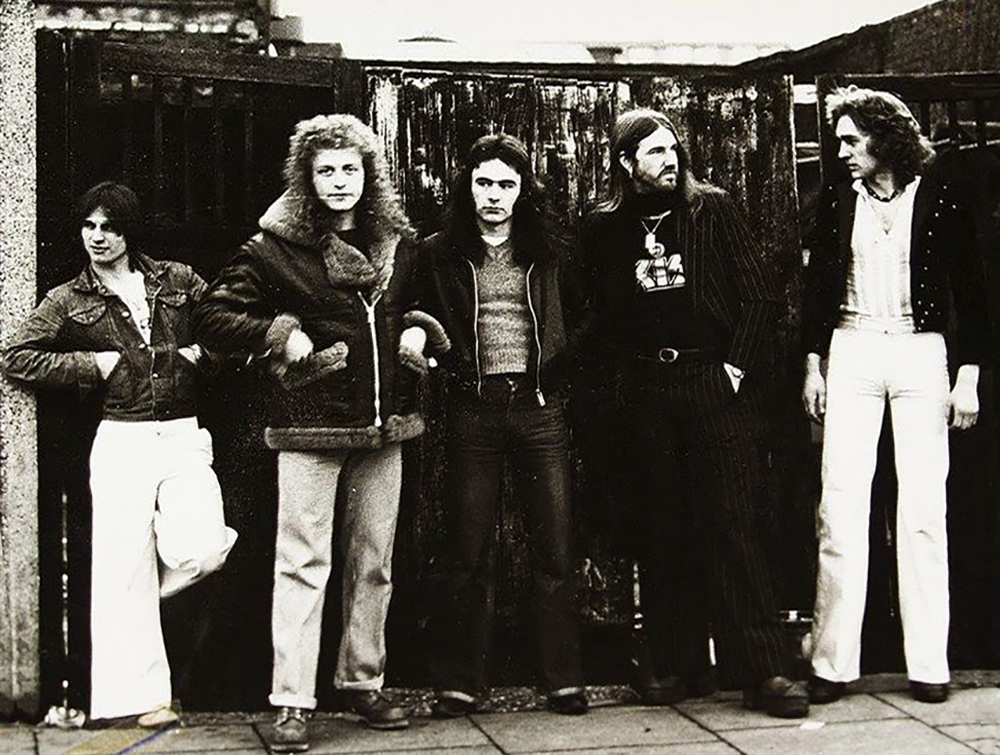
HEAD ON AND SHOCK TACTICS
Next, let’s delve deeper into the ‘Head On’ album. Let’s begin with the cover art, which depicts you holding an axe. Where did the inspiration for this cover come from?
Thunderstick: Well, the original idea for the cover was, for us, it was as though somebody had thrown themselves off the top of a building, and the ground was rushing up. I can’t remember the band, but I think it was a metal band. I can’t remember who it was. Anyway, the label, because of the Thunderstick image, they wanted to use that as a selling point for the whole band because there was so much press. At the time, Thunderstick and I were two completely different characters, a bit like Alice. I would start doing my– I used to wear grease paint underneath it a bit like KISS to accentuate the whites of the teeth and the whites of the eyes and then put the mask on. And I was starting to live a life as Thunderstick. It was starting to get a bit crazy. But anywhere where we were playing, I would put this image together. There were support bands that didn’t even know what I looked like. And I would get to a stage where we would be doing interviews, and I wouldn’t say anything. I would just sit there with the mask on, staring at whoever was doing the interview. And the interviewer found it quite disturbing to interview us– it was disturbing to them because it was crazy. This is 1979. Nowadays, it’s okay. Slipknot, Ghost, all those bands. But then it was a bit crazy. And so the record label really wanted to use Thunderstick as a selling point. And they were the ones that actually put the album together, “Head On,” and that was it. That was it. Yeah. So they said, “Oh yeah, great idea. “Head On.”
I must say, it’s a great-looking cover.
Thunderstick: It is a great cover. I think it is. Yeah. It’s really good. It’s a bit amateurish, but hey-ho, it looks good.
You shot the ‘Biceps of Steel’ video to promote the album, which has since become a legendary cult classic. Can you tell us more about the ideas behind the video and what it was like to work on it?
Thunderstick: That was crazy. They wanted somebody to play the roadie. The actual storyline was because of the name of the band Samson. It was all built around pushing the pillars over at the end and having his hair cut off and all that. So I was able to play the roadie with superhuman strength and all that. And every time that Thunderstick was in shot with me in a shot, my bass player that– or he wasn’t yet, but the bass player that was going to join Thunderstick, Ben, he would wear the mask like that, and I would be shot the other role. But then, as soon as they wanted to do close-up shots of me inside the cage doing a roll or whatever, then I would be Thunderstick. And it went out as a B film in cinemas to “Breaking Glass,” the film that came out at the same time. And it was a B film, and it showed in the cinemas. I mean, it has such a naive charm about it. It’s a great film, and it’s of its time. I know Bruce kind of goes and looks at it and goes, “Oh, my God.” But it was fun. Yeah, it was crazy. And of course, all the people, the audience that came into the supposed show, they still didn’t ever see me. They didn’t know that the roadie that was playing the roadie was me, who was Thunderstick. They didn’t know that.
What happened behind the scenes of the band after the “Head On” album, eventually leading to the lineup’s breakup?
Thunderstick: Well, “Head On,” we produced ourselves, and I had a big hand in the production. In fact, I was the one who sat and did Bruce’s vocals with him when he recorded his vocals because the other two guys had gone home. And I was playing at my most flamboyant. I had a lot of influences, one of which was Keith Moon, of course, and my style of playing was really quite flamboyant at that time. And the album came out and did really well, but we were starting to lose ground on other bands. Iron Maiden got their deal; they got their major deal with EMI. Saxon was still on an independent label; they were with Carrera, but they were starting to make headway. Def Leppard had gone off in a different direction and hit the States, and everything was really good.
We started a legal action against our management, and it was a wrong decision at the time. We were just about to start a tour, and they pulled all the finances from the band. We weren’t legally allowed to even get any money from the gigs, and it was really awful. The whole thing at the time was awful. And then Paul and I nearly lost our houses because of it, and so it was really bad. And it was starting to implode on the band as well, a bit like I’m reading with Alice Cooper about how things started to implode. Plus, I think that you had three people that were at the forefront of that band: Bruce Dickinson was the singer, and so he naturally took his place at the front of the band. Paul Samson because it was called Samson, and Thunderstick was the main image of the band at the time. So it was really hard. I mean, Chris Aylmer, the bass player, was the only one that kind of anchored it to the ground. So that was all quite crazy. It really happened with the management thing. Really, really, everything went sour. We had no money. The record label went bust, GEM. We didn’t know where the next album was going to go or who it was going to come out with, but we had the material to do it.
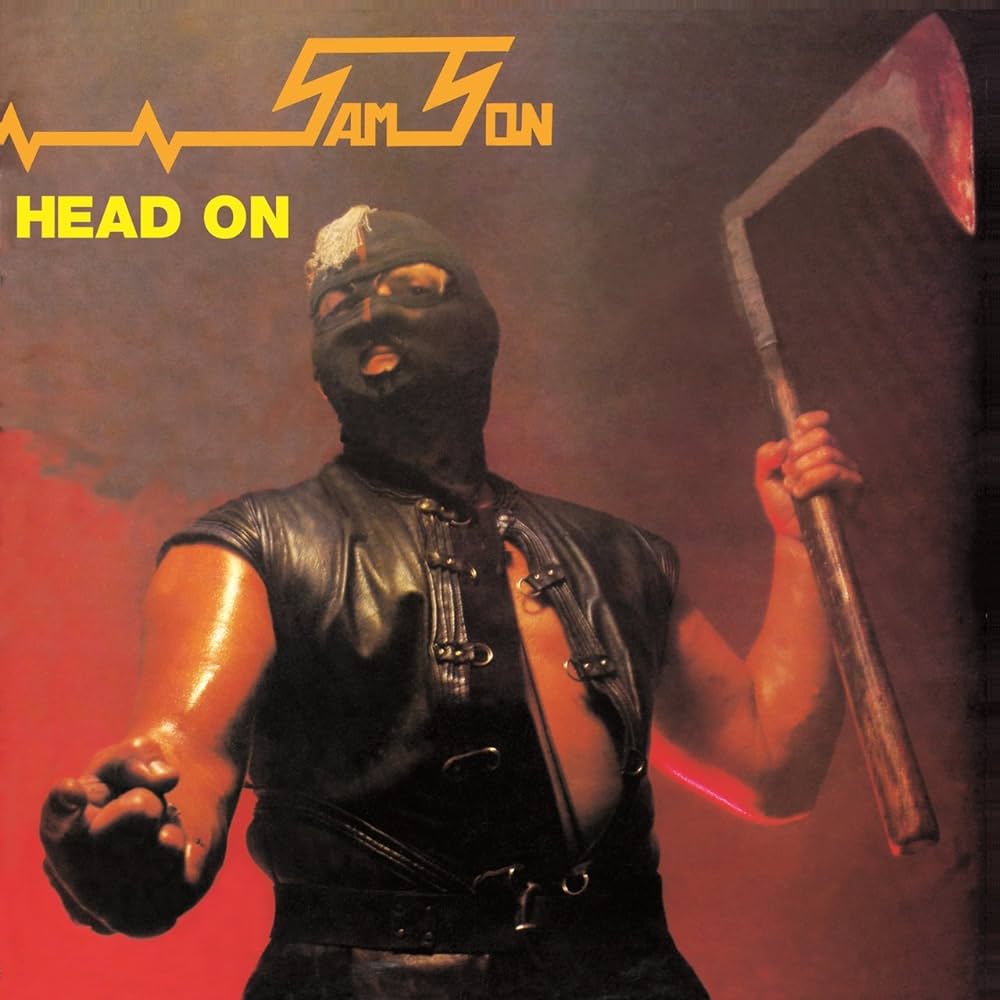
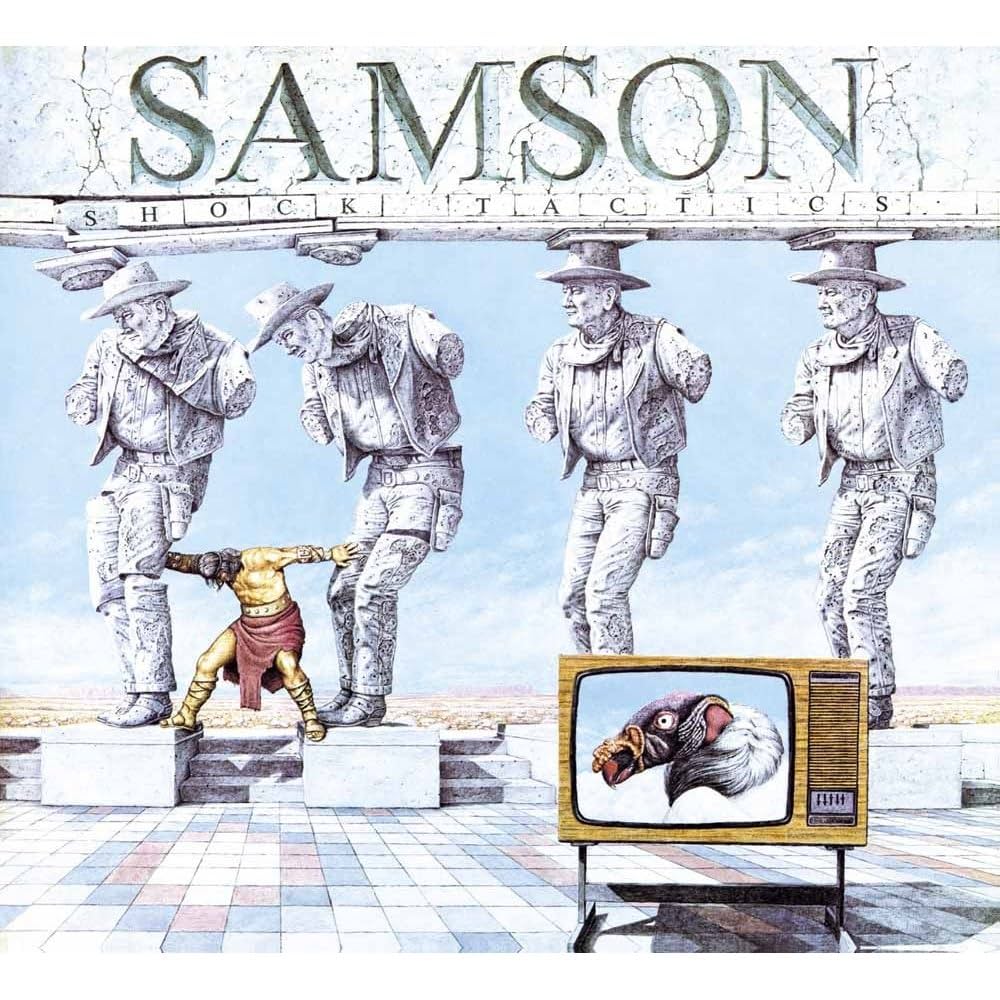
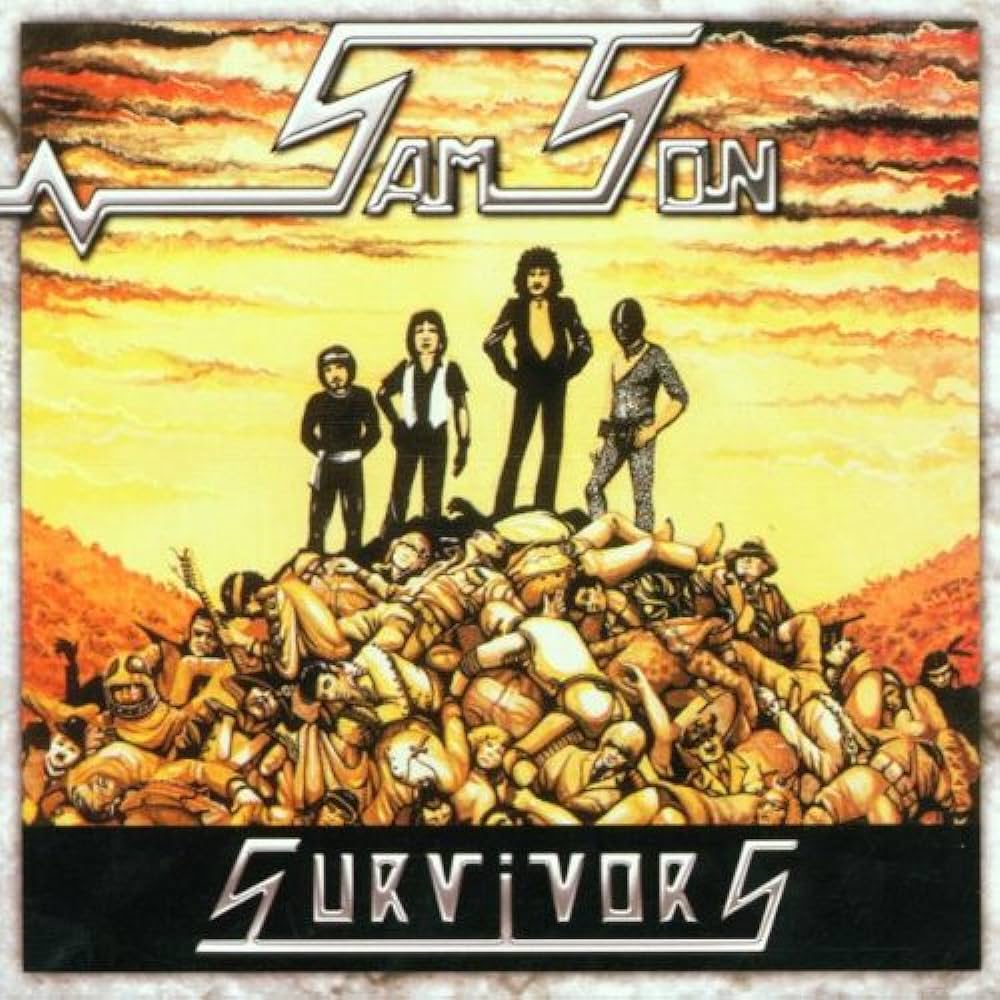
Are you referring to ‘Shock Tactics’?
Thunderstick: “Shock Tactics,” yeah. And they got Tony Platt producing. Tony Platt had been working with AC/DC. And I think it was the publishing company at the time, Zomba, who decided that he would be a really good fit for Samson. So we had this whole album that we’d been touring and went into pre-production with Tony. And he turned around and said, I think what we’re going to do, first of all, is we’re going to pull all these songs apart and rebuild them. And so that’s what happened. We did two weeks in the studio, and we rebuilt the whole album. He also wanted Bruce to sing in a different way. And Bruce has gone on record saying that it was when he originally found his voice. With “Head On,” it wasn’t mature yet. It wasn’t the Bruce Dickinson voice that everybody knows. Whereas “Shock Tactics” was. Tony bought that out. He got Bruce to sing in a different way.
But because everything had gone wrong with the management, Tony wanted to simply downplay everything. So, if you look at my performance on “Head On” and “Shock Tactics,” you would think we were different drummers. Because of all my flamboyance, he would say, “No, no, no, we’re going to try and go for the American market.” So that’s what he did. And my performance on “Shock Tactics” I don’t regard as highly as I did on “Head On.” Because “Head On,” it was me. With “Shock Tactics,” I was playing to somebody else’s tune. And then, by that time, things were starting to go astray within the band. Paul was getting fed up that every time we did an interview, they wanted to talk to Thunderstick, or they wanted to write about Thunderstick, etc. And that led to a lot of altercations within the band. And the one thing that killed it for me was– well, there were two occasions. One was the newly-formed Kerrang! magazine, which did an interview, and both Paul and Bruce said, “Look, when we do this interview, can you talk about the music? Can you talk about where Samson is heading and where we’re going? And not just about Thunderstick.” And they said, “Yeah, okay, that’s fine.” And they did the interview. When the interview came out, every single paragraph had a tiny picture of Thunderstick all the way down it. And the guy had deliberately, obviously, written about Thunderstick. So that was like, “Oh my God,” everything went bang.
Paul and Bruce must have been really pissed off about that article.
Thunderstick: Yeah, really pissed off. Yeah, they were. In addition, I was still trying to push for a theatrical type of band. They wanted to simplify it. And we did a Marquee show, and Bruce wore a rugby shirt and a pair of jeans. So, my image was being alienated from the rest of the band. And that was the way it was. And I still really believed in the theatrical band that I’d always wanted because I love people like Alice Cooper and The Tubes, and bands like that just had so much.
So, in July of 1981, you finally quit the band.
Thunderstick: Yeah, and I quit because it was an untenable situation anymore for me. My position in the band and Bruce left soon after me. It was only a matter of months after me. They pulled in a drummer, Mel Gaynor, who ended up with Simple Minds. They pulled him in to do the Reading Festival. Bruce did the Reading Festival, and that was the last time he appeared with Samson. They had managed to get a record deal. The long-awaited major deal that they were due to sign, Bruce went in on the day of the signing and said, “I’m sorry, I can’t sign it.” And they said, “Why?” And he went, “Well, I’m leaving, I’m joining Iron Maiden.” So that was it. That was the end of Samson at that time.
After you had left Samson and founded Thunderstick, did you stay in touch with Paul and keep track of Samson’s career progress thereafter?
Thunderstick: Yeah, Paul and I always remain really good friends. And, of course, I went back to Samson to do Tokyo and Wacken. And much later, we started writing together again. We wrote some material that’s only on one album. It’s called “Past, Present, and Future.” And there are five or six tracks that we wrote on it. And we were going to give ’em to Bruce because at that time Bruce was doing solo, he had left Iron Maiden. This was in– Oh, God, I can’t remember which year it was.
So yeah, we’d written this material, and it was perfect for Bruce’s voice. We sent him the tracks. And yeah, it was going to happen. It was going to come. We were going to do a small Japanese tour, and we were going to do Europe as well. But yeah, I can’t really tell you what he said because I just can’t. I can’t tell you what he said. But within two weeks of all this being moved and saying, “Yeah, we’re going to do this,” it was announced that he’d rejoined Iron Maiden. And that was that.
The material was great. We brought a guy over from the States, a guy called Rek Antony, who sang the songs. Yes, the performance was good, but I mean, Bruce would have knocked them out of the park. This guy didn’t. And I still think the songs were really, really good. If you ever get a chance to listen to it. “Past, Present, and Future,” the album’s called. CD. And there are five or six tracks that you’ve never heard of before, and they’re really good.
Unfortunately, Paul Samson passed away in 2002 after a long illness. I can only imagine that losing him must have been difficult for you. Was his passing expected, or did it come as a surprise?
Thunderstick: No, because we were still really, really good friends, and we talked to each other every week. And he came on the phone one week and turned around and said, “Guess what?” I don’t know whether you’ve ever heard of a comedy album called “Derek and Clive.” Really filthy, swearing all the time, loads and loads of references to cancer. And it was part of the– every band has their dialogue. Every band has a dialogue. And ours used to be sort of Monty Python, and Fawlty Towers, Derek and Clive. And so there would always be this crazy reference to cancer. And he came on the phone one day, and he went, “Guess what?” And I said, “What?” He went, “I’ve got cancer.” I was just laughing. He said, “No, really, I’ve got cancer.” And I think Chris had already been diagnosed with throat cancer by then. So it was only a matter of time with Chris. And that was it. I mean, by that time, Paul had moved up to a place called Norwich. And I went up and visited him a couple of times. And he’d decided not to have any chemo or anything because he didn’t want his hair to fall out, and what have you. So it was only a matter of time. So when he died, yes, it was terrible, but it wasn’t a surprise because it was inevitable. And I mean, the funeral was a who’s who of people that he’d worked with, Clive Burr, Girlschool, all these kind of people were there.
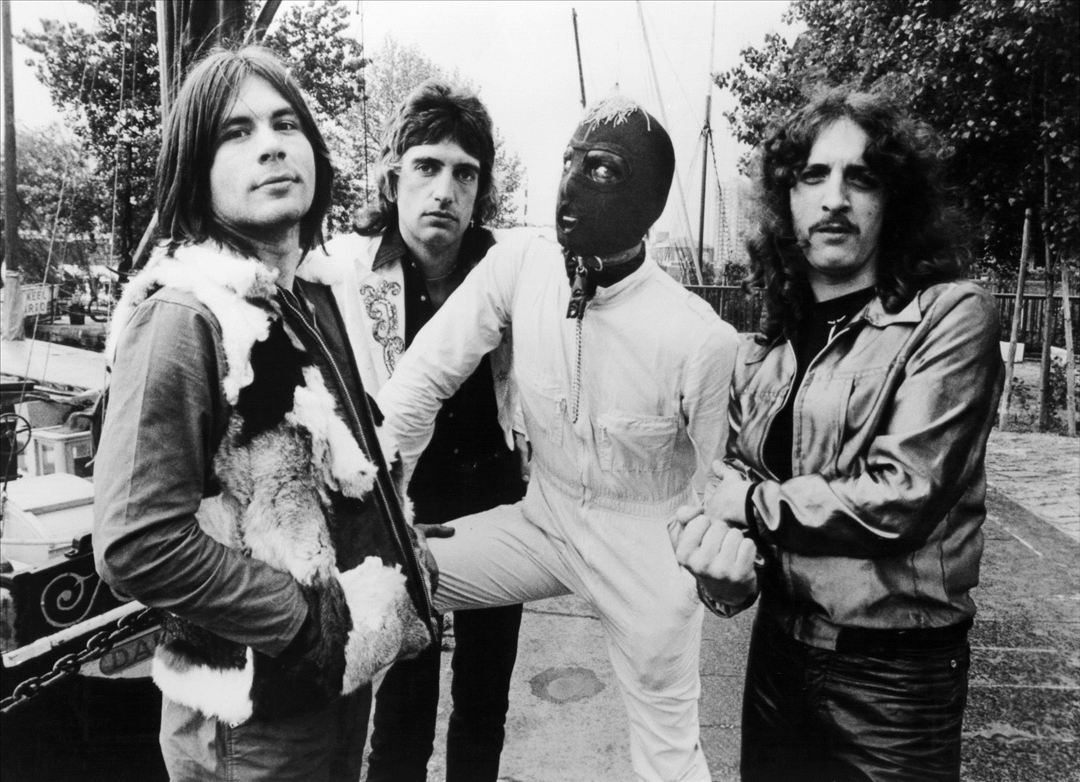
THE LAST WORDS
I think now is the time to sum up our long and interesting chat, but let’s close it with a positive subject. What kind of touring plans does Thunderstick have for the future?
Thunderstick: Well, we’re going back to Poland. We did Poland last year, which was great. We’re doing France, and I’m looking at Giles Lavery, who’s actually putting a tour together for us. Because now I’m with Giles. I’ve had a few management and a few various representations, but I think it’ll work really well with Giles.
Last but not least, maybe you can tell us where fans can now purchase Thunderstick albums and merchandise. It’s not easy to find that stuff from regular stores nowadays.
Thunderstick: Yeah, yeah, I know. I think that’s been really, really—funny enough, just before meeting you, I had somebody message me to say that they’ve tried all over the place to get the album, and they can’t find it. Amazon has given them a refund. And they said it’s crazy. So I’ve just said, well, look, go to https://www.thunderstickmerchandise.com, and you’ll be able to buy it directly from there.
That’s all about it this time. Thanks for your time, Barry. Let’s talk more next time.
Thunderstick: Thank you, Marko.
WEBLINKS
OFFICIAL THUNDERSTICK FACEBOOK PAGE
THUNDERSTICK IN X (EX-TWITTER)
THUNDERSTICK WEBPAGE AND MERCHANDISE STORE
VIDEOS